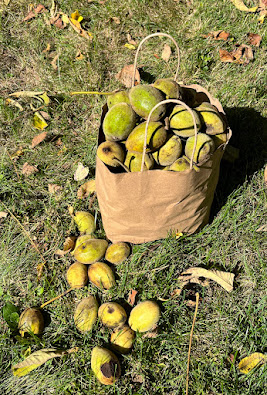Most people attentive to nature are aware that Princeton has lost nearly all of its native ash trees over the past decade, and is now poised to lose its native beech trees as well. These are only the most recent losses due to assorted introduced insects, nematodes, and diseases against which our native trees had not evolved resistance. Also gone from the canopy over the past century are American chestnuts and American elms, with bacterial leaf scorch also taking a toll on red and pin oaks. As additional organisms enter the country due to an appalling lack of biosecurity, other species are threatened.
What is there to do other than mourn, and mourn again, with each new wave of devastation?
One answer to that question may be: Keep an eye out for "lingering" trees. It would be easy to assume that all our native ash, not having co-evolved with the Emerald ash borer (EAB), would be equally defenseless as the introduced larvae eat through the cambrium, cutting off the tree's circulatory system. But an initiative in Ohio has shown this not to be entirely true. Jennifer Koch, a research biologist with the USDA Forest Service, has been leading an effort to find "lingering ash", that is, mature ash that survive while others all around them succumb. Some ash that she and others have found have natural defenses that kill 20-45% of the larvae that bore into them. A very few trees kill 100% of the invading larvae.
A very watchable video features Jennifer Koch, and also Holden Arboretum's Rachel Kappler, telling the
story of ash lost, lingering ash found, and the effort to increase resistance among lingering ash through research and breeding programs.
One particularly impressive slide in the presentation showed how the resistant trees are able to stop the invading larvae before they do damage to the tree.
Here are some of my notes from the video:
- Ash wood is/was used for bats and guitars
- Native ash species in our area: White, green, black, pumpkin
- 300 million acres of black ash-dominated forest in Minnesota could be lost (apparently no other tree species can survive in those wet areas)
- green ash is an important riparian buffer species in the plains states, hard to replace
- The lingering ash are found individually or in clusters, e.g Swan Creek, Oak Openings Park, near Toledo, 108 out of 11,000 had healthy canopies. Two specimens had no evidence of attack. Most resistance is partial, but resistance can be increased through breeding
- greenhouse tests can reduce the amount of land/labor needed for field tests
- resistance is inherited, though uneven
A central point these researchers make is how very limited is the area they have surveyed for lingering ash--only a small area near the Ohio/Michigan border. They call for similar initiatives in other parts of the country.
That's where we come in, as keen or at least intermittently keen observers of the landscape through which we walk. It's important that any tree we believe to be lingering be a mature, wild tree--not a cultivar in a planted landscape--and that it be a tree that has weathered the massive wave of EAB over the past ten years, remaining green while others nearby have succumbed. Photos of lingering ash, and one story of their discovery, can be found at this link.
A brief mention of the various species of ash: I associate white ash with higher ground and grander specimens found or once found around town. Green ash are less statuesque and more associated with wetter ground. Black ash I think of as growing, or having grown, in swamps, such as at Rogers Refuge in Princeton. The Ohio initiative is apparently finding most success with resistant green ash, though the video mentions lingering white, green, and black ash having been found in NY state.
In addition to the info below, there's also anecdata.org--a platform where citizen scientists can set up reporting initiatives.
This keeping an eye out for "lingering" ash can also be applied to other imperiled species in our area. The Ohio researchers request that people report lingering American beech, hemlock, and American elm as well.
Related posts:
Emerald Ash Borer in Princeton



















































